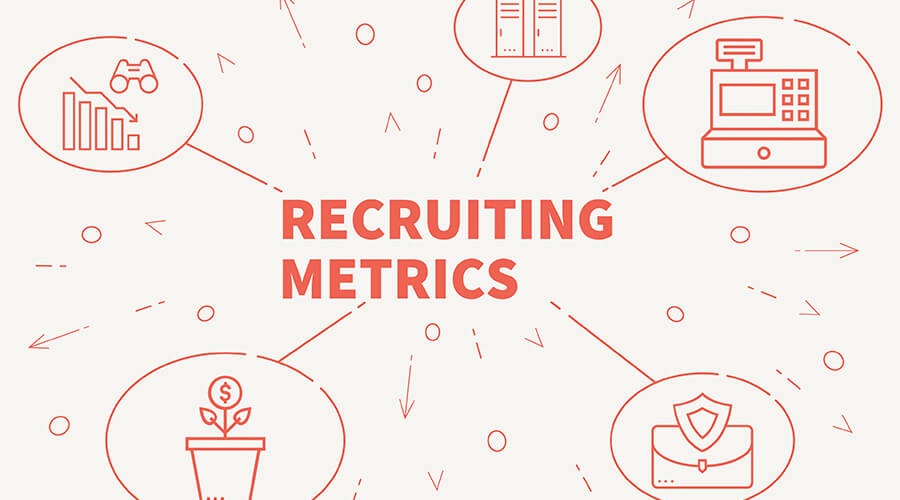For a modern staffer, recruitment means so much more than posting an ad for a job opening online. Since technology and human resources are becoming more and more intertwined, staffers now have a wide variety of advanced tools at their disposal and candidates come through many channels.
The future of HR is data-driven and it’s essential that HR specialists learn to track the efficiency of the recruitment process to find out what areas can be improved. Fortunately, HR software can generate recruitment metrics with just a few clicks, so access to information isn’t a problem.
But which of these metrics are the most important and what can they tell you about your organization’s hiring cycle?
#1. Source of Hire
Most companies now rely on more than one channel to source candidates, from the company website to external recruitment agencies. To cover as much ground as possible, you should take advantage of every channel you have at your disposal, but you still have to know what source brings you the most candidates so you can focus on that one. You can find this out from the source of hire metric.
Sources of hire include:
- Referrals
- The company’s website career page
- Social media
- Listings on recruitment sites
- Recruitment agencies
- Career fairs
By analyzing the source of hire metrics, you’ll find out where most applications come from, so you direct your budget towards that source.
#2. Applicants Per Job Opening
Why should you find out how many candidates there are per available position? Because this metric can help you understand which jobs are the most popular within your organization and why. Most of the time, this metric is indicative of a larger market trend – for example, you might discover that you have a lot of candidates for social media positions – or, it can have something to do with how you advertised a particular position. In this case, you may be able to replicate the strategy to bring in more applicants for other roles as well.
#3. Time-to-Fill
It’s in the interest of every organization to fill a vacant position as quickly as possible. Whether we are talking about a new role or an existing one, finding a qualified person for the job increases productivity and boosts the morale of other employees. However, your expectations may not always be met, which is why it’s important to analyze the time-to-fill metric. Time-to-fill tells you how long it takes from the moment when you post a job opening to the moment you hire someone. This way, you’ll know what to expect, plan overtime accordingly, and have realistic expectations of the following period.
#4. Time-to-Hire
Sometimes, the recruitment process can slow down and when that happens it’s important to find out if there was a weakness at your end. You can do this by looking at the time-to-hire, which is the period between the moment someone applies for a job and the moment that person enters your pipeline. According to the LinkedIn Global Recruiting Trends report, companies in the US take between 20 and 30 days to hire new personnel, although there are variations depending on the industry. If your time-to-hire is higher than average, you should assess the recruitment process for potential weakness and see if there’s a way to speed it up.
#5. Offer Acceptance Rate
Do people submit their resumes, come to interviews, but end up declining your job offers? This means that they had a negative experience somewhere along the recruitment process or they weren’t satisfied with the compensation package. Make sure you look at the offer acceptance rate and, if it’s lower than expected, survey your candidates to find out what they were unhappy with.
#6. Quality of hire (QoH)
Quality of hire (QoH) is one of the most important metrics in the recruitment process because it tells you how much of an asset the new hire is for your company. Ultimately, the scope of your recruitment process is to find someone who can integrate quickly, fit the company culture, be productive, and love their job. To calculate an employee’s QoH, you will need to look at a few factors:
- How long it took them to finish the training process and get up to speed with the rest of the staff
- How much managers and supervisors are satisfied with the employee’s job performance
- The employee’s happiness at the workplace
#7. Applicant drop-off rate
The applicant drop-off rate shows you how many people started to apply for a position but didn’t complete the application process. This can happen for several reasons:
- The application process was too long, it required the candidate to go through too many steps and they found it too tedious – in this case, you can make the online recruitment process shorter and leave some steps for when you meet the candidate face to face.
- The candidate saw something they didn’t like when applying for the job. For example, you may have asked for personal details and they weren’t comfortable sharing them yet. Or maybe you’re expanding on a foreign market but your questionnaires were translated by a non-native and sound very unprofessional. In this case, services like PickWriters can come in handy, because they help you find reliable translators.
- Finishing the application process required candidates to use software or plugins they didn’t have on their computer or weren’t compatible with their device.
#8. Cost per hire
Cost for hire is a very important metric because it shows you how many resources you need to push into hiring one single employee. These resources include everything from the cost of posting an ad online/hiring a recruitment agency to offering the necessary training.
#9. Retention rate
On average, it takes candidates about 12 months to become fully accustomed to the organization and reach maximum productivity levels. If there is a lot of turnover among your new employees during their first year, you need to find out why this happens so you can increase the retention rate.
#10. Candidate job satisfaction
Candidate job satisfaction measures how happy the new employee is in the workplace. In the majority of cases, low satisfaction rates point out a disconnect between the expectations the candidate had before accepting the job and what was offered to them after coming on board. You need to determine if this disconnect appeared because of an inaccurate job description, because of what the interviewers said, or because of some internal issues.
Conclusion
In a highly automated and data-driven HR environment, recruiters have at their disposal many metrics that can help them boost efficiency. Take advantage of what HR software offers you, interpret these 10 important metrics, and not only will you learn how to fill job vacancies faster, but also increase morale and workplace satisfaction.







Leave a Reply